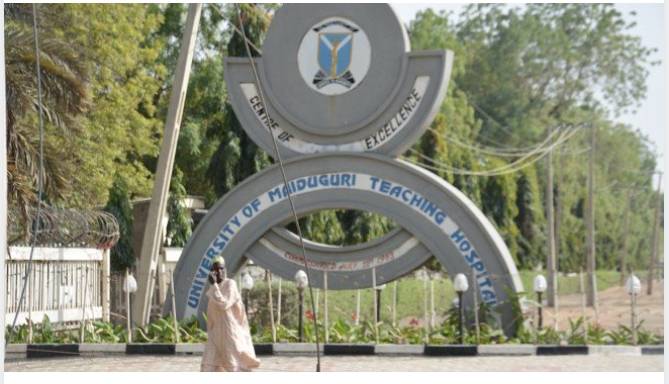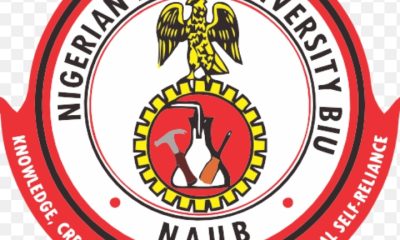Columns
Dangote refinery: when it rains it pours.

Dangote refinery: when it rains it pours.
By Tahir Ibrahim Tahir Talban Bauchi.
When it rains it pours is the best phrase to describe what is happening to the Dangote refinery, as it grapples with one challenge after the other, especially as it prepares for the take-off of the PMS component of its refining processes.
Dangote refinery is the largest investment by a Nigerian in Nigeria in perhaps our entire history.
The investment is valued at $20 billion.
The land purchase alone cost $100 million, with another $420 million spent on revamping and reconstruction of the swamp to make it viable for the construction of the refinery. That is close to a trillion naira in land preparation and pre-construction expenditure.
A port had to be built to accommodate the size of the refinery’s equipment and parts, including building a power plant with the capacity of supplying 1500 MW of electricity. Also, a highway had to be constructed for the delivery of equipments from the port to the refinery, along with the development of 125 kms of pipeline for the delivery of crude oil to the refinery.
The conceptualisation of the project was done over 15 years ago, with its construction taking atleast 7 to 8 years. Industry experts worldwide had warned Alh. Aliko Dangote that it was a crazy project, he admits. He did see the crazy it was when he started, as the challenges ballooned in number and size. Indeed he was ‘crazier’ enough to accomplish its development.
The real crazy now are the impediments and bottlenecks he is facing, as he battles to actualize the aspiration of solving Nigeria’s perennial problem of importing petroleum products, as an oil producing country.
At first it was the International Oil Companies, IOCs, refusing to sell crude to the Dangote refinery, or selling at about $6 more than global prices.
The NUPRC, Nigeria Upstream Petroleum Regulatory Commission had to wade in to secure oil supply for the refinery. Then oil dealers were at it, charging as high as $4 as agency fees, again, against global practices.
The government had to step up against the IOCs and it seemed that it was a resolved issue. Then came a fire incident in the refinery which has caused atleast a month’s delay in the production of PMS, known as petrol, which is what the Nigerian populace is earnestly yearning for, from the refinery.
The entry of Dangote refinery into the diesel market has caused for a reduction of diesel prices by about 60%. This has definitely upset the diesel importation industry and has bloated the number of individuals and cabals coming against the Dangote refinery. Despite all these challenges, the refinery seemed to be on course to deliver petrol to the Nigerian market. But the ‘crazy’ in the industry has probably just set in again, and said, not so fast Dangote!
Very scathing remarks, uncharacteristic of an umpire, were made by the CEO of the Nigeria Midstream and Downstream Petroleum Regulatory Agency, NMDPRA, Engr. Farouk Ahmed, which cast aspersions on the standards, productivity and even the viability of the Dangote refinery.
He castigated the Sulphur content of the diesel from Dangote refinery, putting it at between 650-1200 ppm.
A visit by the Speaker of the House of Representatives on a fact finding mission confirmed that it was at 87.6 ppm. Dangote clarified that they were on their way to declaring a content of 10 ppm. Further testing from other filling stations proved that Dangote refinery’s diesel was far more superior in sulphur content.
There’s also the other parameter of the flashpoint, with Dangote’s diesel recording 90° celsius, compared to other marketers whose product recorded between 40° to 70° celsius. The recommended standard is 66° celsius, further proving that Dangote’s diesel was the best in the market. The Dangote lab for the testing was accredited by the same NMDPRA in March, 2024. NMDPRA knows that as a new refinery, the earliest stages of production would definitely have a high sulphur content compared to subsequent or continued production.
The CEO of NMDPRA also said that the refinery was at 45% completion. As a regulator, he is well aware of the stages involved in the completion of the refinery, where all the products it is designed to produce, can be actually processed and produced by the refinery. For now, two major products are set to be available to the Nigerian market, with one already in use. It is supposed to be in stages. So what was the statement meant to achieve? He also called the refinery a monopoly, while infact, several other modular refineries have been licensed, with quite a number in production.
He lamented that Dangote wanted fuel imports stopped. But isn’t that the desire of every Nigerian? Well of course minus those that make a kill, importing petroleum products, killing our local refineries. NNPC Ltd. says atleast one of their refineries would be producing petroleum products by September this year. In a market where there are multiple producers, how does Dangote refinery amount to a monopoly?
He also complained that Dangote’s refinery is a threat to the energy security of the country. Under the importation regime, we have suffered 3 fuel scarcities in the last 6 months alone. So where is the security in importation? Are we not better off with a steady supply from Dangote? Afterall the refinery is building a storage capacity to have almost a billion litres of petrol in storage.
The CEO’s remarks are in bad light and look like an attempt to demarket the Dangote refinery. Unfortunately it has backfired and has pitched the Nigerian people to stand solidly behind Dangote. It is rare for the people to rally behind a super rich man like Aliko, but what the refinery stands for, is much larger than Aliko Dangote. It stands for the industrialisation of Africa. It stands to change our fortunes, in terms of the hardship and exploitation that we have suffered, over a product in our backyard, that has refused to be available in our front yard. Those comments paint the CEO of NMDPRA as one against the success story of the refinery, and the solutions it stands to bring to one of our biggest problems. The gains are too numerous to mention. From fx gains, to employment, to ending scarcities and black marketing.. there are far too many merits to this project, than the cries of monopoly and what have you. We’d rather be monopolised by our own citizen, than continue to be the dumping ground of oil dealers around the world, that have made our country their cash cow, milking us as they please.
It looks like Dangote’s fuel will be cheaper, just like his diesel, and some dealers don’t want that to happen. With those statements by the umpire, investors are being pushed away.
Steel investments by the Dangote group have now been abandoned due to those unsavory statements. What does it tell other investors around the world about us?
Tahir is Talban Bauchi.
Dangote refinery: when it rains it pours.
Columns
Medical and Health Developments Amidst Insecurity: The Case of University of Maiduguri Teaching Hospital (UMTH)

Medical and Health Developments Amidst Insecurity: The Case of University of Maiduguri Teaching Hospital (UMTH)
By: Balami Lazarus
Insecurity challenges have pervaded and taken over every inch of the Nigerian estate, spreading their wings, casting dark shadows stealthily in silence of ambush. The predator has created excuses against growth, progress, and development among ministries, departments, and agencies (MIDA’s), including health institutions where medical and healthcare services are needed.
Development means a different thing to many people. “An improvement in people’s living conditions inevitably contributes to higher productivity and to economic growth, subsequently development.” Therefore the needs of people in a particular area are their development. For example, health.
Moreover, development is essentially concerned with continuous improvements of the human life and condition right from time, in its capacity for qualitative and quantitative reproduction and capabilities to control and manipulate the environment for the betterment of mankind as a whole. Therefore, the purpose of development is to create an enabling environment for people to enjoy long, healthy, and creative lives at all levels of their growth and progress.
But for UMTH under Prof. Ahmed Ahidjo, the CMD, medical and health development in infrastructure, human capital, and healthcare services is a continuous process amidst insecurity in Borno State and Maiduguri, the state capital.
At UMTH, the story of growth and development has brought progress in health and medical services that are expected from institutional hospitals. The rate and level of medical and healthcare services through specialized medical centers equipped with modern state-of-the-art equipment second to none in Nigeria is a testament to health/medical development in the aforesaid hospital.
People have always examined the concept of growth and development from economic perspectives, refusing to align them to the objectives of human needs that will increase productivity to provide and satisfy these human needs to ensure good medical and healthcare service delivery that is available at all times in UMTH “Centre of Excellence.”
Prof. Ahidjo has no doubt facilitated the concept of health development through changes in the health and medical services provided by UMTH in spite of the ten security challenges staring us hard in the face.
Growth, progress, and development initiated by Prof. Ahmed Ahidjo is itself a concept of development in the health sector. The CMD has blended the concepts of development together through their aims and objectives, which are charted towards the improvements of the human standard of living in healthcare and medical services.
Prof. Ahmed’s efforts have therefore brought developments in the life of the hospital that have never been witnessed since the inception of UMTH, until the man with the Midas touch came on board with improvements and transformations of infrastructures and facilities.
Prof. Ahidjo had directed his development towards the satisfaction of the hospital’s needs, the primary objectives of UMTH, which translates to human capital development through teaching, practicals, medical research, and provisions of healthcare services to her immediate host community.
Therefore, development cannot be seen purely as economic, social, and political affairs but rather as an outcome of man’s effort to transform societal structures and institutions in the case of UMTH.
Balami, a Publisher/Columnist 08036779290
Medical and Health Developments Amidst Insecurity: The Case of University of Maiduguri Teaching Hospital (UMTH)
Columns
In Search of Our History Through Reconstruction and Restructuring of the Nigerian State for Peaceful Coexistence and Good Governance

In Search of Our History Through Reconstruction and Restructuring of the Nigerian State for Peaceful Coexistence and Good Governance
By: Balami Lazarus
This piece is an extraction from a paper I wrote years back intended to be presented to my society—the Borno Museum Society (BSM)—but it never saw the light of day. However, this is not the original title; I did some changes, putting in some terms to reflect the contemporary issues facing us currently as Nigerians.
Looking at the paper today, which had lain fallow since 1991, I laughed. Dr. Musa Hambolu and Mr. Kyari Bukar, as members, encouraged and urged me to make an effort and present the paper for onward publication in our newsletter, but it never happened. I believe this version will make sense to many more who believe in the Nigerian project as a sovereign nation.
And back to the main menu of the discourse.
One of the major historical developments in Africa south of the Sahara was the great Bantu migration that took place thousands of years ago. It was a mass exodus of the Bantu people, culture, and traditions; its droplets along the line of their migration gave birth to settlements, which had affected many ethnic nations’ language, culture, and traditions. What happened later is part of African history. We are now nestled between who are we? And what are we?
It is very clear that the reconstruction of our history through the restructuring of Nigeria and its state and conditions has long been toyed with, knowing fully well that it is the heart of our peaceful coexistence and good governance. It’s also the main bowl of our socio-political and economic growth and developments.
Our history, geography, and ethnology have drawn our attention to the state of sovereignty known, called, and addressed as Nigeria, a colonial creation, forgetting that we were here before.
the white man’s creation.
To trace the origin of the people that made up Nigeria, one cannot dismiss the substance of other disciplines like history, archeology, anthropology, geography, sociology, and linguistics, and other related subjects. These fields of scholarships have tremendously improved in the explanations of our history, artifacts, and cultural source materials of the people that were wrongfully and forcefully brought together to live and form Nigeria. Therefore,
There is the need for the restructuring of the Nigerian state for peace and good governance for the benefit of all citizens.
To achieve this, we must collectively agree with one voice to restructure our systems to find a lasting solution to our torn political garment, unity shredded with suspicion generated by us over the years. Because modernization is the process of change towards social, economic, and political systems.
Historically, Nigeria is a conglomerate of large ethnic diversities, and each represents a distinct nation with different cultures, traditions, and civilizations living independently before the forceful amalgamation of 1st January, 1914, carried out and executed by the British colonial masters. Sources available to political historians on our past underscored the necessity to shift from the present state of nationhood to a common ground that will provide us with equal opportunities to maintain and sustain our togetherness as one indivisible and indissoluble nation through reconstruction and restructuring.
The reconstruction and restructuring of our historical and political past is paramount; it will aid in checking the high rate of insecurity and criminal activities of bandits and kidnappers. And shall also clamp down on terrorists and the rise of insurgents. Restructuring will reduce sentiments and segregation in the activities of our national life.
History does not repeat itself. But people repeat history and then falsely accuse history of repeating itself.
We have consciously decided to polarize our country with Black Strike sentiments. And here we are, with agitations in different forms: Oduduwa, Biafra, Middle Belt, and Niger Delta.
Balami, Publisher/Columnist 08036779290
In Search of Our History Through Reconstruction and Restructuring of the Nigerian State for Peaceful Coexistence and Good Governance
Columns
Aspirations: A Compass for a Purposeful Journey of Life

Aspirations: A Compass for a Purposeful Journey of Life
By: Harmony Shimbura
A blueprint for a purposeful journey, the human experience is often defined not by where we are looking, but by having aspirations, a compass of purposeful life, and an act of claiming agency over one’s future.
My life’s aspirations are not merely a list of goals or a collection of ‘bucket list’ items. It is a living philosophy, a commitment to growth, connection, and the relentless pursuit of a life lived with intention. They are threads woven together for personal values and to give back to your community.
I believed the core of aspirations should be a desire for perpetual evolution. And I also believe that the moment we stop learning is the moment we stop breathing. Therefore, one of my primary goals is to remain a lifelong student where learning is a continuous process.
I aspire to deepen my understanding of the world through diverse perspectives, whether it is through traveling to places where knowledge is obtained by listening or observations, as is the case with the traditional Cherokee ways of learning.
I constantly challenge my own biases, spiritually and mentally. I aspire to reach the state of equilibrium where my peace is not dependent on external circumstances.
Do you know that aspirations transcend titles and salary brackets? Moreover, my true ambition is practical impact. I want to be engaged in work that I feel is the extension of my soul in it at whichever level. I also
I believe that work should be a contribution to the collective good of humanity.
As a young lady, I am on the self-push to achieve a level of mastery in my chosen field where my intuition is as sharp as my skills. I want to be known not just for what I did, but for how I did it with integrity, excellence, and a collaborative spirit.
Most of us neglect the vessel that carries us through life, but I aspire to treat my body with the respect it deserves. My aspirations for health are not about vanity but for sanity in purity.
These aspirations are not a destination I will one day reach; they are the fuel for a lifelong journey.
Harmony Shimbura writes from Zaria. 07033886918
Aspirations: A Compass for a Purposeful Journey of Life
-

 News2 years ago
News2 years agoRoger Federer’s Shock as DNA Results Reveal Myla and Charlene Are Not His Biological Children
-

 Opinions4 years ago
Opinions4 years agoTHE PLIGHT OF FARIDA
-

 News9 months ago
News9 months agoFAILED COUP IN BURKINA FASO: HOW TRAORÉ NARROWLY ESCAPED ASSASSINATION PLOT AMID FOREIGN INTERFERENCE CLAIMS
-

 Opinions4 years ago
Opinions4 years agoPOLICE CHARGE ROOMS, A MINTING PRESS
-

 News2 years ago
News2 years agoEYN: Rev. Billi, Distortion of History, and The Living Tamarind Tree
-

 ACADEMICS2 years ago
ACADEMICS2 years agoA History of Biu” (2015) and The Lingering Bura-Pabir Question (1)
-

 Columns2 years ago
Columns2 years agoArmy University Biu: There is certain interest, but certainly not from Borno.
-

 Opinions2 years ago
Opinions2 years agoTinubu,Shettima: The epidemic of economic, insecurity in Nigeria





